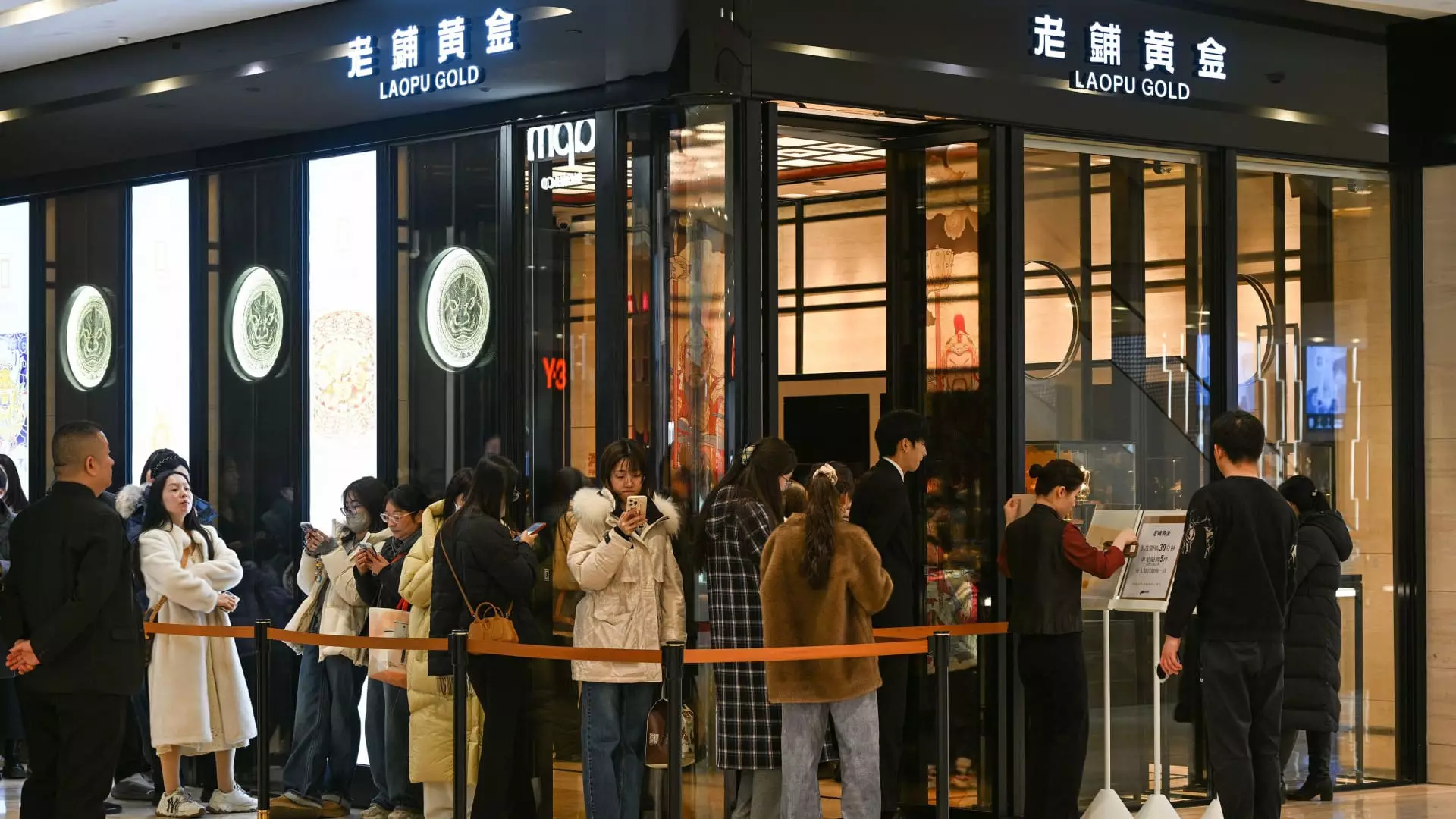As China’s economy emerges from the shadows of a pandemic-induced slump, there’s a pervasive narrative of recovery. Yet, one must tread carefully amid the optimism that surrounds the latest earnings reports from e-commerce titans like Alibaba and JD.com. These companies noted a resurgence in revenue growth in late 2024, but this comes cloaked in the reality that growth rates still fall short of pre-pandemic heights. The commendable growth seen—around 15.8% for JD.com—may seem like a beacon of hope; however, it’s vital to recognize that this is merely a flicker compared to the robust double-digit increases typically observed before the pandemic altered consumer behaviors and spending patterns.
Experts, such as Charlie Chen of China Renaissance Securities, have warned against naively celebrating this uptick in consumer spending. While the numbers suggest a recovery, they do not match the prior vibrancy of the consumer market. Chen’s assertion that real affluence among Chinese consumers is stunted by the ongoing real estate slump speaks volumes. The lack of confidence stemming from housing market instability casts a long shadow over consumer sentiment, suggesting that any claim of a full-blown recovery might be premature.
Government Policies: A Double-Edged Sword
Chinese policymakers are throwing multiple initiatives at the wall to stimulate spending, but the effectiveness of these measures raises questions. With trade-in subsides extended to various consumer goods—from smartphones to electric vehicles—the government is clearly trying to reignite the spending fire. However, is this genuine consumer empowerment, or merely a desperate attempt to mask the underlying economic malaise? JD.com’s CEO, Sandy Xu, mentions a steady recovery in consumer confidence spurred by these policies, but one must wonder: for how long can such artificial stimulus maintain the facade of growth?
It is increasingly apparent that these measures could lead to a false sense of security. When consumers only buy into the euphoria of government-induced incentives, it creates a cycle where spending does not reflect genuine confidence but rather a coerced response to external stimuli. Consumers need to reclaim their autonomy instead of relying on government handouts to spur their spending habits. Long-term sustainability lies in genuine economic growth, not superficial facilitation.
Niche Markets: Glimmers of Hope amid Decline
In the dense fog of uncertainty, certain sectors are surprisingly thriving, showcasing the complexity of consumer behavior in 2024. Companies like Laopu Gold, which specializes in culturally resonant jewelry, have reported phenomenal profit increases — boasting a staggering 236% rise. Pop Mart, a children’s toy company, also experiences remarkable revenue growth, suggesting that some segments of the marketplace are uniquely positioned to capitalize on shifts in consumer priorities.
The success of these niche markets shouldn’t eliminate the underlying issues plaguing the broader retail landscape. While e-scooter sales via Niu Technologies surged, their previous year’s decline should not be overlooked. It serves as a reminder that recovery isn’t uniform. The contrast in performance between different sectors exposes the volatility currently characteristic of the Chinese consumer market, presenting a skewed picture that requires careful dissection to avoid misplaced optimism.
The Nuanced Landscape of Retail Sales
Diving into the consumer trends of 2024 reveals a mixed bag of outcomes. For every rise in sales in segments like electronics and luxury goods, there are equally worrying declines in traditional sectors. The overall retail landscape indicates a muted rise, at a meager 3.5% for the year, compared to average growth rates seen in previous years. As consumers retract into highly-selective spending, it’s the discretionary categories that are witnessing some recovery, while essentials remain stagnant.
Yet, this creates a perilous imbalance, as companies face pressure from both rising costs and steep discounting warfare. In a competitive landscape punctuated by aggressive pricing from electric car companies and heavy online discounting, traditional retailers are rapidly losing ground. The decline in same-store sales reported by major beverage chains, like Guming, further encapsulates the brewing crisis in the consumer sector. The erosion of consumer spending across critical categories means businesses must pivot rapidly or risk being cast aside in the relentless march of economic evolution.
The Pivotal Role of Demographics
As we peer more closely into the consumer demographic shifts, we find that demographic trends—like the growing spending power of the “silver generation” aged 50 and older—are reshaping the future landscape of consumption in China. Companies like Trip.com are angling to meet this demand, with international travel bookings now exceeding pre-pandemic levels. This highlights the evolving consumer psyche, where experiences often take precedence over mere material goods.
However, this shift begs the question: Are companies prepared to pivot in line with their customer base’s changing expectations? As the younger demographic, now grappling with a complex economic environment, looks for sustainable and ethical options rather than luxurious excess, companies must adapt their offerings accordingly, or risk losing their market share to more agile competitors.
In essence, the intricate web of post-pandemic consumer behavior reflects deep-rooted psychological scars from both economic uncertainty and previous consumption patterns. Recognizing the multifaceted nature of recovery is crucial, as companies must not get lost in the allure of momentary gains without understanding the broader implications of consumer sentiment.

